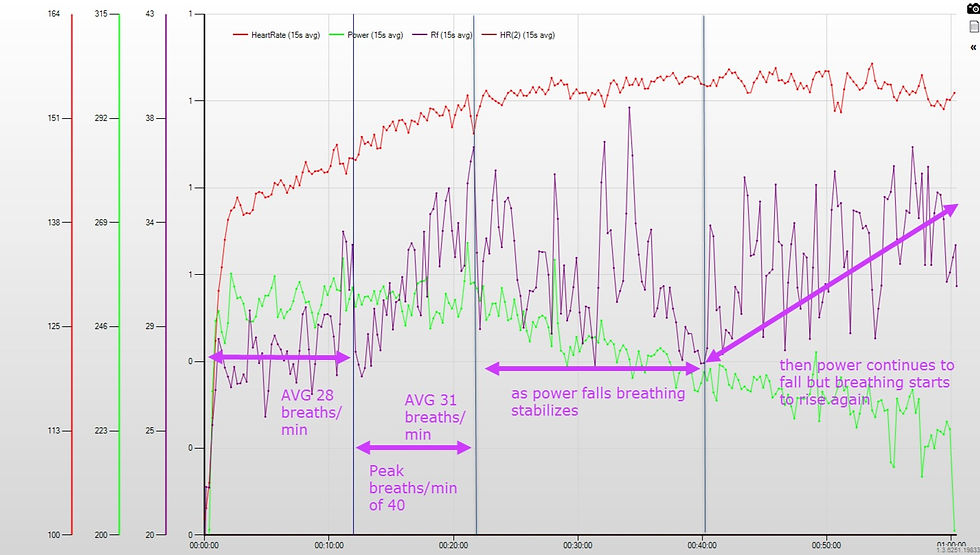How and why to do your tempo
- Sans Chaine

- Jan 27, 2021
- 3 min read
Updated: Mar 7, 2023
Being able to pump out some solid watts when a ride is hard is great. First though you have to be able get to that point in the ride, and second have some energy left to actually pump out those watts. Training is about building your fitness so that you can make it to the point of the ride that counts and still have that energy to spare.
To develop this balance some of our training has to be about teaching our body to use fat as a fuel source, as discussed in What are the training zones. The more fat you use to fuel your ride the less sugar you use saving it for when you need to unleash that extra gear. Tempo is a great way to develop this extra gear.
When training we use two main metrics to guide our workouts: heart rate and wattage. The heart rate can be defined as a measure of what is happening inside the body, while wattage is an external measure of our output. Because heart rate is telling us what is happening inside our body it is a valuable metric for our tempo sessions. Roughly, when we go above our tempo heart rate zone carbohydrate will become the primary fuel source. That means that our tempo work needs to be done below the top of our tempo heart rate zone - which can be thought of as a ceiling that you shouldn’t go above when doing this type of work.
OK, so you are doing your tempo ride and are applying the top of your tempo heart rate zone as a ceiling. You have started your tempo effort in your tempo wattage zone. But now your heart rate is slowly rising towards that heart rate ceiling. What to do? Keep your cadence constant and back off your power a bit to control your heart rate. Back off your power?!? This is the part that most riders struggle with.
If you only ride by power you are disregarding the fact that there are changes happening inside your body. Ignoring these changes will change the impact these rides have on your fitness.
One-hour ride by fixed power - things are changing
Check out the graphs below to see that there is in fact change happening in the body. This was a one-hour ride by fixed power with a stable cadence, a typical workout prescription.
Notice the red line, heart rate, rises across the hour from endurance up through to threshold. The purple line on the second graph is respiration frequency - the number of breaths per minute. Change in RF typically correlates nicely with changes in our training zones. Despite the power - an external measure - being stable note how RF and heart rate - internal measures - increase across the ride. As any rider knows, as we go harder we tend to breathe faster and the heart rate increases.


Despite the wattage being held stable there is clearly internal change happening This ride went from feeling very manageable, to challenging, to feeling like a time trial. Not what we want our tempo days to be like.
One-hour ride with a heart rate ceiling
Now let's take a look at a ride where the heart rate ceiling is applied. This ride was started using wattage as a guide. Then as the heart rate increased towards the ceiling wattage was backed off to manage the effort.

Note how the RF starts to increase after 10-minutes. Reducing the power allows the RF to stabilize again for a while. But then after 40-minutes of work the RF continues to rise despite a further reduction in power.

The stability in the RF through about 40-minutes shows that this rider was riding a stable training zone, not allowing the internal intensity of the effort to increase throughout as happend in the one-hour by fixed wattage ride. Even with the rise in RF towards the end this ride felt manageable the whole time and could have been repeated the next day.
Tempo training is about changing the point at which your body starts to use carbohydrate as the primary fuel source. To make this change you can't ignore what is happening internally. As the heart rate and respiration change they are telling us that you are likely burning more sugar.
The more fat the body burns to fuel your riding, the more sugar you have in the system when it is needed. Making the change in your body takes time, but once it happens you can feel it. It will build your confidence knowing you have something left in the tank to follow that surge on the hill.
We know you can ride harder than your tempo zone. The trick is managing your riding to create the adaptations that will make you a better rider in the long run.




Comments